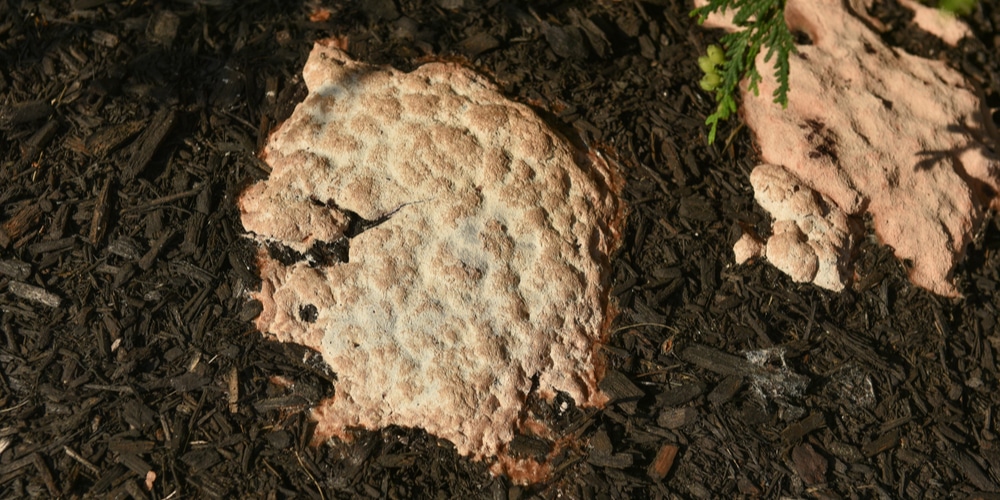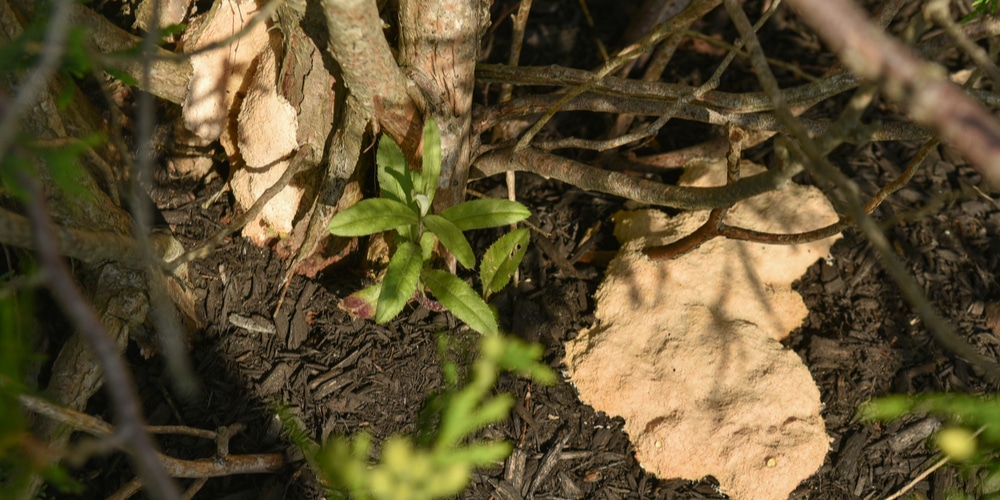Mulch is usually an organic matter that’s used to preserve soil moisture and keep your plants protected from extreme temperatures. However, you might be averse to putting mulch in your garden or yard if it has mold.
How to treat white mold in mulch is a question often asked by worried gardeners. We’ll explore what it is, if it’s harmful to the soil or plants, and the steps you can take to remove white mold in your mulch.
What is White Mold in Mulch?

As unattractive as it looks, the white mold that’s present in your mulch may actually be a beneficial organism called saprophytic fungi.
Saprophytic fungi can appear as cotton or white crumbly stuff on soil, compost, and mulch. These organisms like to consume dead organic matter, which is essentially the definition of mulch. Their mechanism of action is breaking down mulch and turning it into humus while releasing essential plant minerals.
White mold is different from black, egg-like spores (artillery fungus) or slime molds, which appear bright yellow or orange. White mold might be a mushroom or the remnants of one but they can be easily identified and removed as needed.
Why Does White Mold Form in Mulch?
White mold in mulch is actually a normal occurrence, exacerbated by moisture and several other factors.
Mulch is more likely to develop mold as it’s an organic material and if exposed to warm environments. The ideal temperature for mold is somewhere between 77 to 86 degrees F, or 25 to 30 degrees C. Humidity also plays a huge role in the development of mold, as is moisture.
White mold usually forms in summer or spring and after significant rainfall. Overwatering and too much moisture can also aid in the development of fungus, algae, and slime mold.
There are several ways how you can treat white mold in mulch caused by the saprophytic fungi, but it’s worth noting that they are beneficial to the soil and your plants. You can leave them alone if their appearance doesn’t disturb you, and the good news is that they have a slow-spreading habit.
How to Treat White Mold in Mulch
Prevention is the Best Solution
You can stop white mold from forming on your mulch by following several rules. For one, you should mulch only at a recommended depth which is somewhere between one to three inches, and in a loose manner. Anything thicker than this encourages mold to grow and cover your mulch.
Putting a fresh layer of mulch on top of the affected one won’t help- you’ll be encouraging more mold to form in the process.
Spray with Vinegar
If you’re bothered by the appearance of mold in your mulch and want to eliminate it, then you can concoct a simple DIY mix of water and vinegar.
Vinegar, in strong concentrations, can be harmful to the plant, so make sure to dilute the solution and apply it only to the mulch. You can use a spray to control where it goes. Also, you may need to re-spray several times to get rid of the mulch fungus completely.
Mold on soil can present a serious concern, but there’s a quick solution to this. Just amend the soil so that it will be more acidic or basic depending on your plant’s pH preference, and this will discourage mold from growing on the medium.
Remove and Replace
The simplest solution to getting rid of white mold in your mulch is to collect the material and dispose of it. Then, you can re-apply with a fresh batch of mold-free mulch around your plant or tree as needed.
Removing and replacing may be the most tedious out of all on the list, but you won’t have to wait or worry if the vinegar spray will work. In the future, you can keep in mind the best practices to prevent mold from forming on your mulch.
Correct Your Watering Habits
Excessive watering can easily contribute to molds and algae forming at the top of your soil and mulch. If you notice your plants sporting yellowing leaves and drooping foliage, then you’ll want to ease up on the watering can and allow the top inch or two of the soil to dry out.
Related Article: Why Does My Compost Have Mold?
